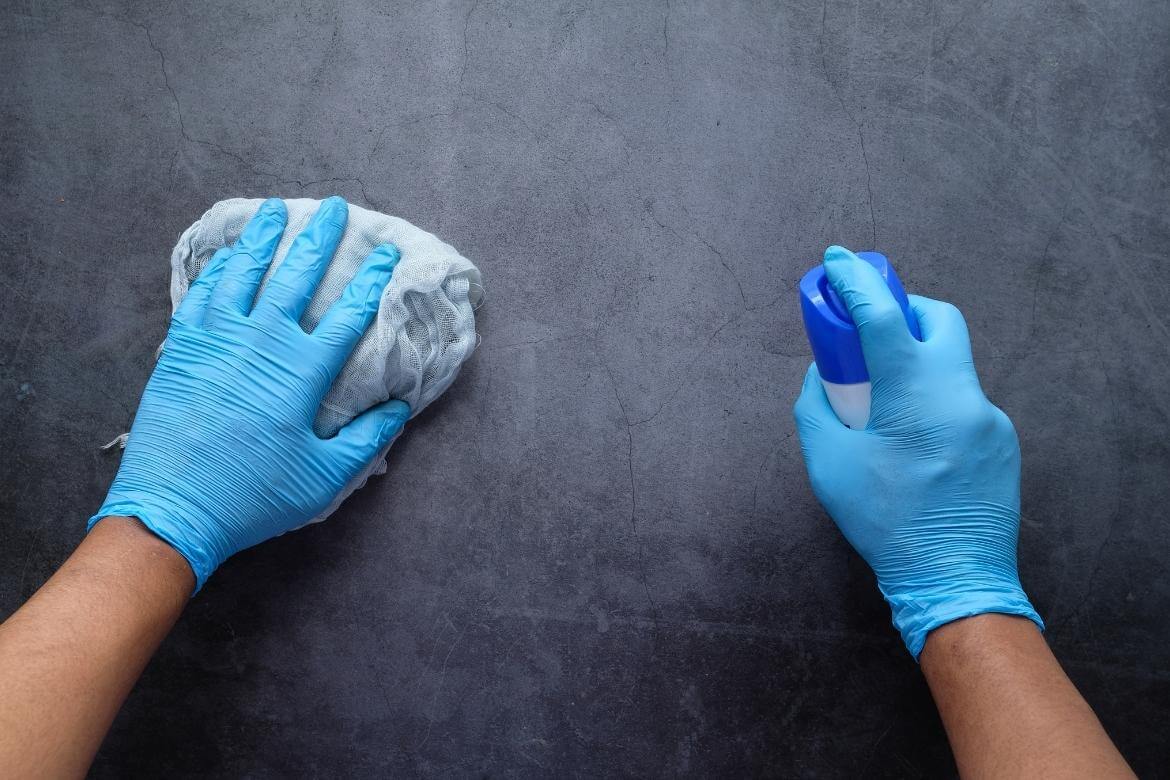1st July, 2025
9 Ways To Comply With COSHH
The Control of Substances Hazardous to Health (COSHH) Regulations apply to every workplace. Here are nine ways you can comply with COSHH - including identifying hazardous substances, assessing the substances you use and produce in your workplace, controlling the risks, keeping records, and providing training.

Every business needs to know about the Control of Substances Hazardous to Health Regulations (COSHH). COSHH applies to nearly every type of business, from work in offices, to work on construction sites.
Hazardous substances are found in the cupboards and equipment of businesses from all sectors. In factories, warehouses, hospitals, and schools.
And if you use or produce hazardous substances in your workplace, you have legal responsibilities under the COSHH regulations.
Here are 9 ways you can comply with COSHH:
1. Identify Hazardous Substances
COSHH stands for Control of Substances Hazardous to Health. The first step in complying with COSHH is to identify hazardous substances in your work. Because before you can control hazardous substances, you need to know which substances are used or created by your work processes.
It stands to reason that you need to know which substances you need to control before you can comply with the COSHH regulations. So you'll need to find out what substances you use, and any that you create, in your business activities.

You can check the safety information on labels and the information provided by suppliers for substances you purchase, look for the red diamond-shaped hazard symbols.
Remember to also identify any substances you produce including mixtures, fumes and dust.
2. Assess Hazardous Substances
Under the Control of Substances Hazardous to Health Regulations (COSHH Regulations), COSHH assessments are required by law, for any substances that are hazardous to health.
Now that you have identified the hazardous substances in your workplace, the next step in complying with COSHH is to carry out COSHH assessments for them.
Not sure what a COSHH assessment is? Here's a COSHH assessment guide to get you up to speed.
3. Control Exposure
Of course, the main purpose of COSHH is the control of hazardous substances. Just knowing what substances could harm your health isn't enough, you need to take action to protect your team from harm.
To comply with COSHH, you must prevent or adequately control exposure to hazardous substances.

Controlling exposure may involve eliminating or substituting substances for lower-risk alternatives, or applying protection measures such as engineering controls, ventilation systems and personal protective equipment (usually a combination of control measures).
4. Make Suitable Arrangements
Hazardous substances are dangerous. They are called hazardous for a reason! You'll need to make arrangements for safe handling, storage, transport and disposal of hazardous substances. These arrangements can be recorded on your COSHH assessment.
Consider the type of hazards that each substance presents. For example, the substance could be corrosive, flammable or harmful to the environment. It might even be toxic.
The bigger the risk, the stricter the arrangements will need to be to allow the substance to be used safely.

5. Plan for Emergencies
Things can, and unfortunately do, go wrong. Control measures could fail, PPE could break, and people can make mistakes. It is important to plan for accidents, incidents and emergencies.
COSHH Regulation 13 requires you to have arrangements for emergencies in place.
the foreseeable types of accidents, incidents or emergencies which might occur, and the hazards they could present. Consider where such incidents might occur, what effect they might have, the other areas that might be affected by the incident spreading, and any possible repercussions;
HSE - Control of substances hazardous to health (Sixth edition) pg.67
Emergency arrangements should include spillage procedures, emergency procedures, including first aid, and where needed, steps to mitigate the effects, details on the hazards present, and warning or communication systems to enable an appropriate response.
6. Create a COSHH Register
You have identified the hazardous substances in your workplace. And you've created your COSHH assessments. Now you need to keep these up to date and make them easily available to your workforce.
If you only use 10 hazardous substances, keeping these COSHH assessments organised in a file might be simple. But what if you have hundreds?
A COSHH register is a great way to keep your COSHH records organised. You can record the location of the substance, its COSHH assessment reference, the datasheet and the date for review.
Get started with our free COSHH register download.
7. Monitor
COSHH applies to substances hazardous to health. But unlike safety hazards, health hazards can take time to affect you. You might not know right away if your health is being damaged, or if exposure levels have been exceeded.
And if your health is being quietly and secretly damaged over a long time, when you do realise, it's often too late to reverse the effects.
Where required, particularly with higher-risk substances, make sure workplace exposure limits (WELs) are not exceeded and ensure that control measures are maintained.
Exposure levels should be monitored at regular intervals. If a toxic substance has no smell, you might not know a control has failed without air monitoring.
It is also considered appropriate to provide health surveillance for employees where they are exposed to specified substances and there is a reasonable likelihood of an identifiable disease or adverse health effect.

8. Provide Information
Regulation 12 of COSHH requires employers to provide "suitable and sufficient information, instruction and training". This can include details of the substances they are exposed to, exposure levels, findings of the COSHH assessment, the precautions and controls taken to protect them, along with details of any monitoring and health surveillance in place.
12.—(1) Every employer who undertakes work which is liable to expose an employee to a substance hazardous to health shall provide that employee with suitable and sufficient information, instruction and training.
9. Provide Training
In addition to information and instruction, you also need to provide training. This could be training on a specific substance and the risks involved, or more general training on COSHH and how to comply.
Training could be in the form of toolbox talks, safety briefings or COSHH awareness briefings. You could also provide more formal COSHH awareness training, particularly for those with COSHH responsibilities.
Need help with COSHH? Start your COSHH register today by downloading our free template to help you identify the hazardous substances in use, and download COSHH assessment templates for your work activities.
This article was written by Emma at HASpod. Emma has over 10 years experience in health and safety and BSc (Hons) Construction Management. She is NEBOSH qualified and Tech IOSH.
Need to know COSHH?
Take our COSHH awareness elearning course and get your certificate today.
COSHH CourseRecent posts like this...

What Is A COSHH Assessment?
The COSHH regulations require you to do a COSHH assessment when using or creating hazardous substances. Most businesses will need them. But what is a COSHH assessment, its purpose, and what does this document need to include?
Read Post
9 Ways To Comply With COSHH
The Control of Substances Hazardous to Health (COSHH) Regulations apply to every workplace. Here are nine ways you can comply with COSHH - including identifying hazardous substances, assessing the substances you use and produce in your workplace, controlling the risks, keeping records, and providing training.
Read Post
Where Does COSHH Apply?
COSHH is a law that requires employers to control substances that are hazardous to health. Most businesses use substances that are hazardous to health, from cleaning chemicals to creating gases, dust and vapours - so the COSHH regulations will apply to some aspects of most businesses.
Read Post